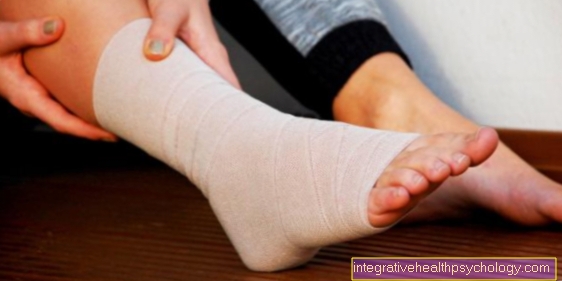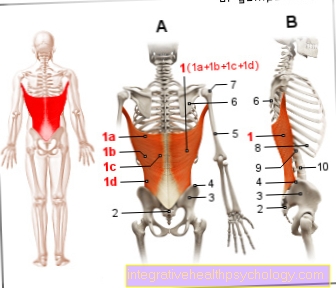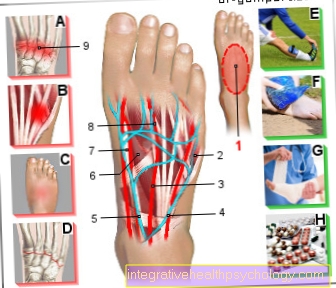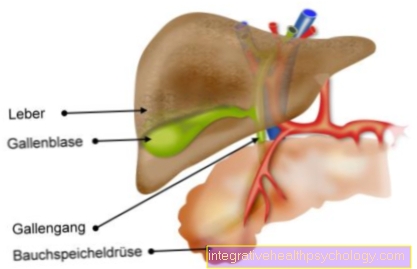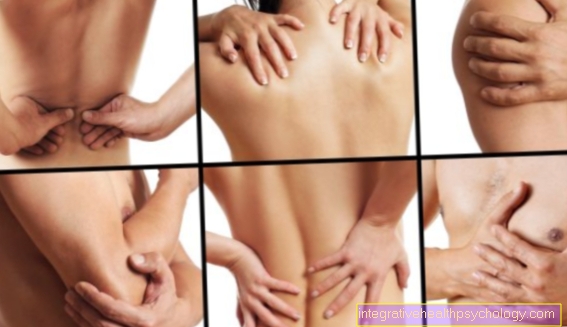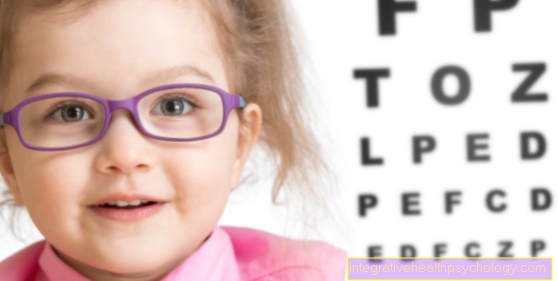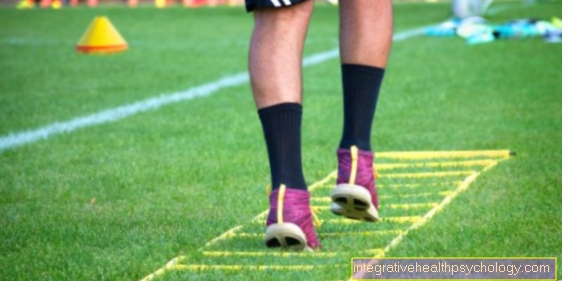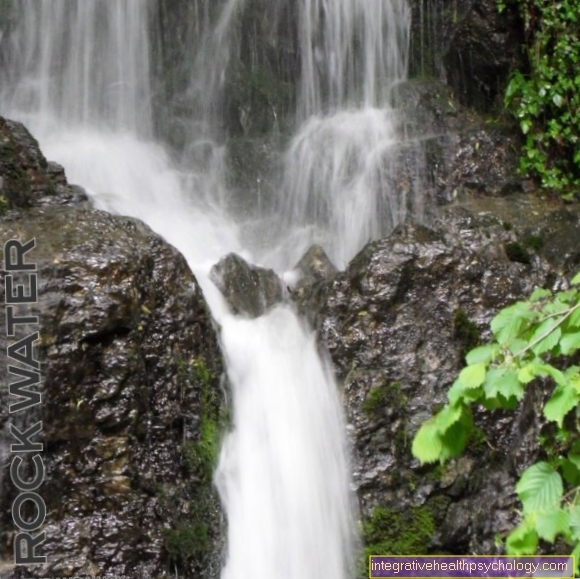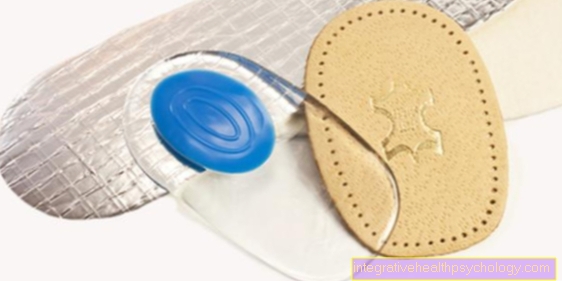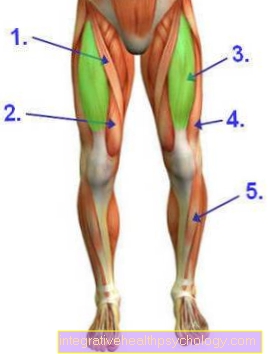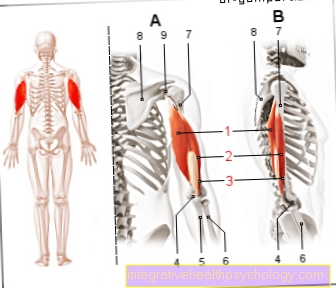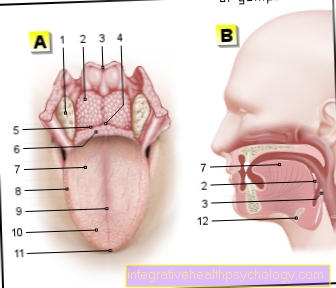Coordinative skills
The term coordination
The concept of coordination originally comes from Latin and means something like order or assignment. Popularly it is understood as the interplay of several factors.
In the field of sport, coordination is defined as the interaction of the central nervous system and muscles within a specific sequence of movements. (HOLLMANN / HETTINGER).

Definition of coordinative skills

In addition to the physical fitness (strength, speed, endurance and flexibility), the coordinative skills are part of the sports motor skills. The coordinative skills are partly due to development, partly determined by factors related to the environment. If the conditional skills improve predominantly in early adulthood, the coordinative development can be trained especially at the age of 10-13 years. Willingness, ability, striving for achievement, improved ability to observe and perceive are characteristic of late childhood. If the coordinative skills are not sufficiently developed at this learning age, they can only be learned to a limited extent or with great difficulty in retrospect. Many teachers and trainers complain about a lack of coordination among today's school children. The coordination skills should therefore be trained more intensively.
The division of coordinative skills is a controversial topic in sports science. The most common variant includes the ability to react, adaptability, coupling ability, rhythmic ability, orientation ability, ability to differentiate and balance, which will be discussed in more detail in the following chapter.
A distinction is made between intramuscular coordination, in which the interaction between nerves and muscles within a muscle is understood, and intermuscular coordination, which refers to the interaction of several muscles. Indicators for good coordination in sport are movement precision, movement flow, movement rhythm and movement speed.
The individual coordinative skills
introduction
coordination is the interaction of our senses, the peripheral and the central nervous system, and the Skeletal muscles. The coordinative skills ensure that the sequence of movements is coordinated with regard to all parameters. There are seven coordinative abilities that can only determine the athletic performance in their interaction. A single skill says nothing about the holistic performance of an athlete or athlete. Often one can also draw a connection between conditional and coordinative skills and only then completely decipher the performance.
If you look at high-performance gymnasts, dancers or skiers, it is almost unimaginable what the human body is able to achieve. All these forms that occur in sport are based on a perfect interplay of muscles and Nervous system. Even walking requires coordinative demands on the organism, which, however, are learned in early childhood and are considered to be automated.
In sport, coordination skills should never be viewed in isolation. In most movements, the interplay of coordinative abilities is what defines the target movement. For example, consider the jump shot in Handball, the run-up requires a good rhythmic ability and orientation, the jump and throw a high potential of coupling ability. The ability to adapt is closely related to the ability to react. Ball sports can only be carried out at a high level if all coordinative skills are in harmony.
Seven basic coordinative skills according to Meinel and Schnabel
According to Meinel and Schnabel, there are seven basic coordinative skills that play a role: the kinaesthetic ability to differentiate, the ability to react, the ability to connect, the ability to orient, the ability to balance, the ability to adapt and the ability to rhythmise.
Responsiveness
The ability to react is defined as the ability to react as quickly and purposefully as possible to one or more stimuli from the environment. A distinction is made between several reactions.
- Simple reaction: In many disciplines of athletics or swimming, the motor action is triggered by a simple signal (starting shot). The signal is followed by a defined sequence of movements. The signal source can be acoustical, optically tactile or kinetic.
- Choice reaction: with the choice reaction, the athlete has to choose one of several alternative courses of action when the signal occurs. When an obstacle suddenly appears, a skier has to decide how to cross it.
- Complex motor reaction: If not just a single signal but several signals occur in a situation, one speaks of a complex motor reaction. This type of signal is a common feature in sports games. The signals can be the goal, the opponent, the teammates, etc., for example. In contrast to the simple reaction, the complex reaction leads to a cognitive process.
The ability to react is important in most sports, but its trainability is very limited. The ability to react is closely related to the ability to adapt.
Example tennis:
Since the ball at tennis Being able to fly at a very high speed is particularly important. Especially when playing on the net, it requires the highest level of reaction skills to play the ball back precisely.
Adaptability
If situations suddenly change while performing a movement, the athlete must appropriately adapt his action to the newly created situation. Example: a tennis player is on the net and bets volley on. The ball gets stuck on the edge of the net, forcing the player to change his plan of action at lightning speed. In the changing situation, a distinction can be made between expected and unexpected change. In sports games in which an action is dependent on the opponent, an expected change can be expected.
With regard to the executing movement, a distinction can be made between observable changes. This is the case with the network scooter in the tennis. The player has to change his plan of action completely due to the serious change.
A smaller change only leads to a change in time, space and force parameters. This change is hardly noticeable to the observer. The change in the distance between the hurdles in a hurdler is an example of this type.
The ability to adapt depends on the speed of reaction, the recognition of the changed situation and the experience of movement. Only those who have a sufficient repertoire of movements can act appropriately in changing situations.
Example tennis:
Since the strokes in tennis are always played depending on the opponent, a high degree of adaptability is of great importance. Balls that jump due to lack of space, like a net roller, also require a good ability to move. Unpredictable actions by the partner can also lead to reprogramming in the course of action.
Orientation ability
Orientation is defined as the ability to determine the position of one's own body in space and to change it precisely.
In addition to the visual analyzer, the acoustic, tactile and kinesthetic analyzer are decisive for orientation.
Examples from the sports:
- Acoustically (Shouts from teammates)
- Tactile (Good grip when climbing)
- Kinesthetic (Leverage ratios in wrestling)
- Vestibular (Balance in gymnastics)
The orientation ability depends on the experiences already made in the sports. A good footballer recognizes gaps in the opposing defense that a beginner does not recognize. It is easier to find your way around your own apartment in complete darkness than a stranger.
Example tennis:
The position of one's own body in space, the positions of opponents, teammates and the ball require orientation in space. The ability to orientate becomes particularly clear with the smash ball. While moving backwards, the player hits the ball with his eyes facing upwards and has to observe his own position in space, the opponent and the ball.
Ability to differentiate
Above all, the ability to differentiate plays a decisive role at a higher level of performance. In order to fine-tune movement coordination, information must be recorded and processed in a differentiated manner. The kinaesthetic analyzer is of the greatest importance. A distinction is made in the ability to differentiate between information absorption and information processing.
Example tennis:
In order to hit a small ball that is flying at 180 km / h with a tennis racket centrally in the sweet spot, the player must guide the racket optimally to the ball. The angle of the club head to the ball is crucial. The use of force must be precisely dosed. All of this requires a high degree of kinesthetic differentiation skills, and makes this one of the most important coordinative skills in tennis.
Coupling ability
The ability to connect is the main component of coordinative skills. In all team sports and setback sports, coupling skills are the dominant skills. It is characterized by the coordination of sub-bodies. The individual partial impulses can coordinate simultaneously or successively in order to ensure the flow of movement, the rhythm of movement, the speed of movement and precision of movement. The individual sub-bodies must be coordinated with one another in terms of time, space and force. The coupling ability is closely related to the biomechanical principles that have to be included in order to explain partial impulses.
The goal of a sporting movement often results from the power transmission of individual body parts. The shot put is not only dependent on the impact or stretching force of the shot put Arm muscles, but from Thigh extensor muscles, Trunk and arm muscles dependent. However, the force that is created by stretching the supporting leg and rotating the upper body can only be transferred to the ball if the movements follow one another immediately.
Example tennis:
At surcharge, forehand and Backhand the coordination of partial movements is crucial for optimal technique in tennis. The power to accelerate the ball results not only from the acceleration of the arm, but also from the use of the leg muscles and core muscles. The fuselage takes on the function of the transmission link.
Balance ability
The balance of the person is controlled reflexively. Humans therefore have no way of arbitrarily controlling their balance.
In sport a distinction is made between a stable and dynamic balance. A stable equilibrium is when the body should remain in a certain position (handstand). When the body is in motion, it is called dynamic equilibrium. Here, the movement is also in translation (jogging) and rotationally differentiated. If an object is kept in equilibrium in sports, one speaks of the equilibrium of objects. This is the case in ball sports and gymnastic elements.
The kinesthetic analyzer and vestibular apparatus play the most important role in keeping one's own body in balance. The tactile and optical analyzer are not very important.
The vestibular analyzer has a higher stimulus threshold than the kinaesthetic analyzer and is therefore important for dynamic, large-scale changes in position and rotation. The dynamic equilibrium is based on the human organism's sense of acceleration. In the case of calm, slow movements, the kinaesthetic analyzer is of greater importance.
Example tennis:
If the stroke in tennis is carried out with the right technique, the body is in a state of unstable equilibrium during the stroke. In order to bring the body from unstable to stable equilibrium, good balance is required.
Rhythmic ability
The ability to rhythmic means to perceive a given rhythm, to recognize it and to adapt one's own actions to this given rhythm. The given rhythm is e.g. a melody, movements of the partner and the opponent, or the ball. Furthermore, one's own movement must be adapted to the changing conditions of the environment. This becomes clear in downhill mountain biking.
Example tennis:
Rhythm training has found its way into modern tennis training more and more in recent years. This is not directly about adapting to the given rhythm, but rather about adapting to the rhythm of the ball. The strike movement is always linked to the trajectory of the ball. One speaks of one internal- and external timing.
After Hirtz
Contrary to other sports scientists, Hirz distinguishes between five different coordination skills: kinaesthetic differentiation skills, spatial orientation skills, responsiveness, rhythmic skills and balance skills.
The first ability ensures that movement sequences can be executed precisely and with high accuracy. The kinaesthetic ability to differentiate is the basis for balance and rhythmic ability. The spatial orientation ability is responsible for determining changes in position and movement of bodies in space. This coordinative ability cooperates with the other four abilities, particularly strongly with the kinesthetic ability to differentiate. With the ability to react, the athlete pursues the goal of moving to different signals (acoustic, tactile, optical) as quickly as possible and reacts accordingly. This coordinative ability has no connection to any of the others. The ability to rhythmic ensures that movements are timed appropriately as part of the sequence of movements of individual movements or groups of movements. In conclusion, the ability to balance is the ability to keep the body in balance. This must be done against external influences and relates to static and dynamic actions.
After flower
Blume built on the coordination skills of Hirtz and added two additional skills: the ability to connect and the ability to adapt.
The former is the ability to coordinate partial movements of an overall movement (e.g. the throw) in such a way that the overall movement succeeds and an optimal result is achieved.
How can you improve coordination skills?
In volleyball
The coordinative skills (adaptability, balance, orientation, differentiation, coupling, reactivity, rhythmic ability) are also of great importance in volleyball.
The different coordinative skills can be trained through certain exercises in groups, alone or in pairs.
Bouncing against a wall under time pressure is a versatile exercise, as the volleyball player has to react as quickly as possible to the bouncing ball in order to achieve an optimal starting position. Dredging in pairs or in small groups is another good job. Small extra rules can be added. After a person has dredged, they have to turn around their own axis one or more times before the ball can be dredged again. These two exercises are examples for the variation of simple training exercises by different parameters (time pressure, multi-tasking tasks, precision pressure, etc.).
At Soccer
In football, the ability to differentiate is particularly important because it determines, for example, how hard the ball is played or shot. In general, the coordination of the feet and legs in connection with the head is particularly important. Because a footballer has to keep his eyes up so that he cannot see what his feet are doing. The movements must be able to be carried out blind. Therefore, slalom poles, cones and coordination ladders are very often used in coordination training in football. These exercise devices are combined with other exercise units such as shooting, flanking, tackling, and short sprints. The more variables are combined, the more complex the exercise becomes for the players.
Good exercises for training coordination can also be developed from individual pass exercises. First, the ball can be passed to each other in opposing groups, high or flat. By changing the pass goal and the introduction of small additional tasks, the exercises become more and more complex and demanding.
As a rule, coordination skills are never trained individually, but in combination exercises. The best known coordination training is probably the ABC of running. There, different leg raises, spreading and combination exercises are built into simple career paths. In addition to the legs, this also applies to the arms and head.
In badminton
In badminton, coordination skills are also immensely important, as the head, arms and legs are equally involved in the game. Fine coordination when using the force of the stroke or quick stretching movements is particularly important.
Two players face each other and play balls alternately. Player one always plays long or short and player two always plays forehand or backhand. The distribution of tasks can be swapped, or alternative arrangements can take place.
Another exercise primarily relates to pace. Here one player is equipped with a basket full of balls and plays a second player at a freely selectable speed. The second player must try to reach every ball that is passed to him by player one.
While swimming
When swimming, the coordination of arms and legs is particularly important. Anyone who does not move legs and arms synchronously, for example during breaststroke swimming, will be disqualified. To train coordination on land, drums and drums are suitable, as the movements are performed so often that the athlete gets to know his body better and can increase his perception. Other coordination exercises can then be incorporated into the pool. When crawling, for example, the breaststroke leg kick can be incorporated. This can also be combined with individual movements of the four swimming types. Many different coordination exercises can be developed from this.
Read more about this under
- Movement description breaststroke
- Description of movement dolphin swimming
- Movement description crawl swimming
- Movement description backstroke
At tennis
Since tennis is a very diverse sport, the demands on coordination skills are also very high. The serve is therefore already a highly complex movement. The ball must be thrown correctly, at the same time the player brings his hitting arm into position and wind force and weather must also be factored in to the movement. Now it's time to hit the ball perfectly. This can be practiced by making the normal swinging motion more difficult. A partner can use colored cloths or balloons to indicate different forms of exercise that the player must also perform when teeing off. These can be: lift a leg (right or left), close one eye, turn in a circle before throwing it, etc.
Read more about this under
- Serve tennis
- Backhand tennis
- Forehand tennis
Exercises to improve coordination skills
Exercises to train coordination skills are often found in children at school. Games such as chain catching, shadow run and ribbon catching are useful for training responsiveness. This aspect becomes particularly clear when walking in the shadows. One athlete runs ahead and a second tries to imitate all the movements of the athlete in front. So he has to watch exactly what the man in front is doing and then react at lightning speed.
An exercise for the rhythmic ability can be running over banana boxes or rings on the floor. These boxes / rings are designed in such a way that they approach or move away from one another as the distance increases. This automatically puts you in a changing rhythm.Even if the distances remain identical, you get a rhythm in your run-up due to the distances themselves.
A simple exercise for kinaesthetic differentiation is throwing at small targets such as cans or areas of a goal hung with ribbons. Just like playing darts, it is about aiming precisely and coordinating your movements accordingly.
The roll forwards and backwards is a very good exercise for training orientation skills, as the body through the over-head-Effect is briefly not perfectly oriented. Even under water with closed eyes we can train our sense of direction excellently, as the body perceives gravity much less than outside of the water. Therefore you can train your orientation skills well under water.
The ability to balance can be trained and trained almost everywhere in everyday life. You can go to the traffic lights on one leg wait for the light to turn green. You can also get aids such as a slackline or indo-board and use them to carry out various balance exercises.
The ability to change is in almost all games and sports trained, because when playing there are always new situations to which the players and athletes have to adapt and therefore rearrange and change their movement patterns.
For the ability to connect, it is important that arm, leg and trunk movements are coordinated or combined. A very simple exercise that everyone should have tried before is the jumping jack. This is about training the interaction of arms, legs and trunk. However, you can also introduce variations in the movement sequences by replacing or changing opposing movements, working with parallelism or changing the speed. If you want to bring in even more variation, you can refrain from the classic foot movement of the jumping jack and make long jumps forwards and backwards. There are many possible variations in this exercise, which differ in complexity and intensity.
The exercises for coordination skills presented here are just a small selection from the large repertoire of exercises and movement options. The exercises from schools and clubs are particularly worthwhile for beginners and not yet so experienced athletes, as they teach the basics very well and you can change the level of difficulty by making your own variations.
Overview of coordinative skills
Responsiveness: Ability to react as quickly as possible to signals from the environment and to convert them into motor action.
Adaptation ability: the ability to adapt or redefine the movement plan during a sporting activity due to a changed situation.
Orientation ability: ability to adapt adequately to spatial conditions or changes.
Ability to differentiate: Ability to differentiate fine motor coordination during individual sub-phases through the kinaesthetic analyzer.
Coupling ability: Ability to coordinate individual partial body movements in time and space in order to be able to achieve the target movement in the best possible way.
Balance ability: ability to keep one's own body, parts of the body or objects in balance.
Rhythmic ability: the ability to adapt one's own physical movement to a given rhythm.
You may also be interested in this topic: Movement Education
Training of coordination skills
For the training There are some aspects of coordination skills that should be considered. It should be noted that in childhood, the training of coordinative skills has clear priority over conditioning skills. The foundations are laid in childhood, and experiences that are missed there are much more difficult to catch up in adulthood.
The training of coordinative skills results in an endless number of different movement experiences and patterns that enable the children to develop their coordinative skills naturally. In addition, such exercises promote the ability to learn and one should therefore refrain from specializing at an early stage.
Independence is another point that comes into focus here. Movement tasks and exercises that are used in the training of coordinative skills ensure that the children experience and discover many things independently and independently. Independence is encouraged and this also has a positive effect on motivation.
The coordinative Skills are the basis for later learning complex movement patterns and movements. For this reason it is important not to neglect the training of coordinative skills, and instead to ensure that one's coordinative skills are kept at a good level.
The advantage in training and in training Having coordinative skills is that even if the exercise movements are mastered the training can go on. In addition, you make your coordinative exercise more difficult with an integrated fitness training (additional tasks) and thus get a new range of possible variations.
It is therefore very important to train coordination skills, especially in childhood, as this can be seen as the basis for later tasks. Children who have enjoyed a good and effective training of their abilities, later find it much less difficult in complex sports and games when it comes to learning complex sports motor movements and sports games.
But even in adulthood, coordination skills can still be trained and improvements achieved. However, as an adult you don't learn as well as you do as a child and the physical and mental prerequisites to cope with the task are then more difficult for adults, who as children were not trained in coordination skills as comprehensively as others.
More information
Further information on the subject of exercise science can be found here:
- Movement science
- Movement theory
- motor learning
- Biomechanics
- Biomechanical principles
- Movement coordination
- coordinative skills
- Coordination training
- Motion analysis
- Stretching
All topics that have been published in the field of sports medicine can be found under: Sports medicine A-Z



